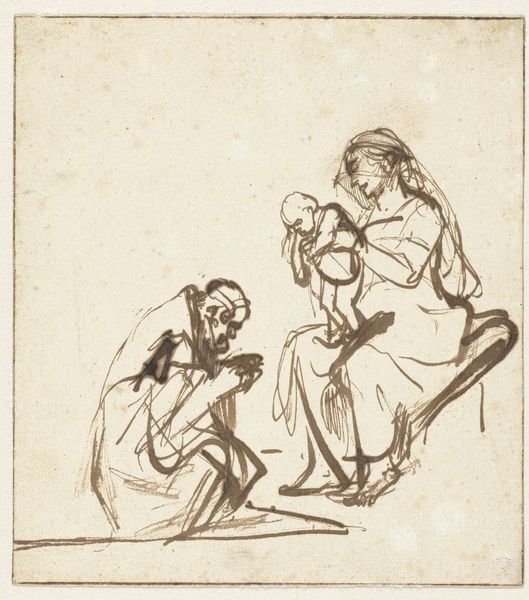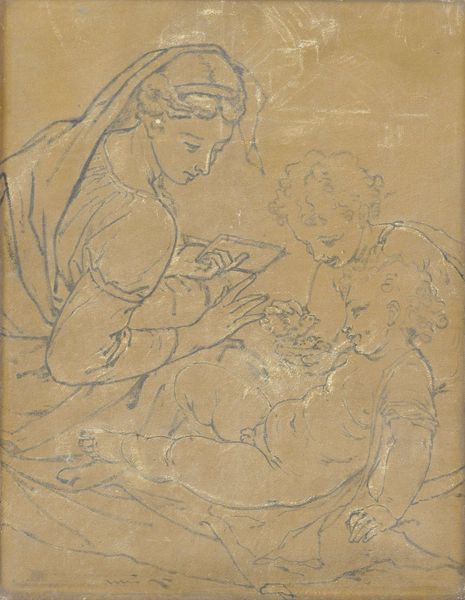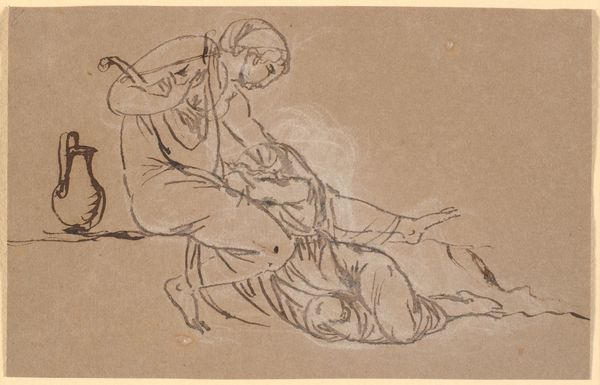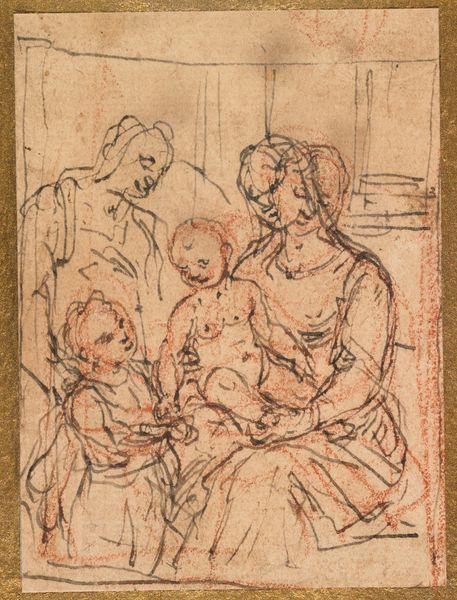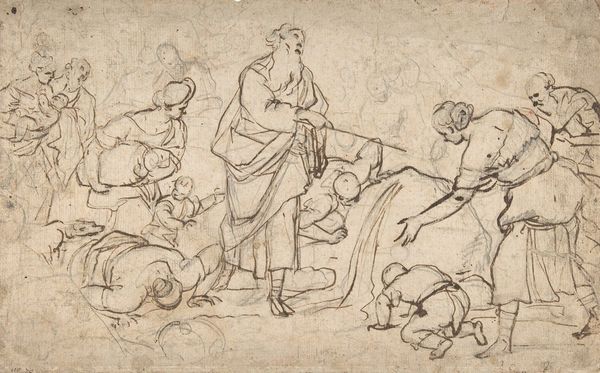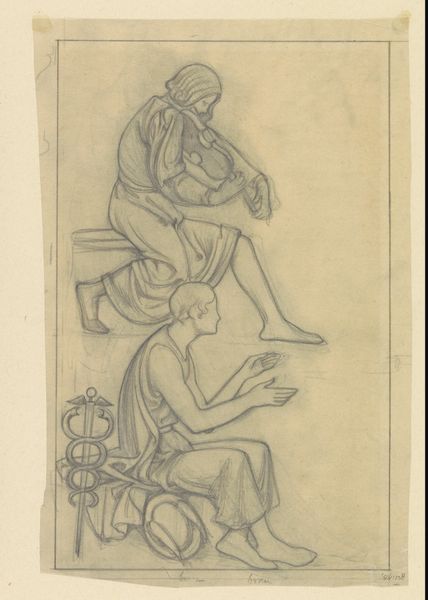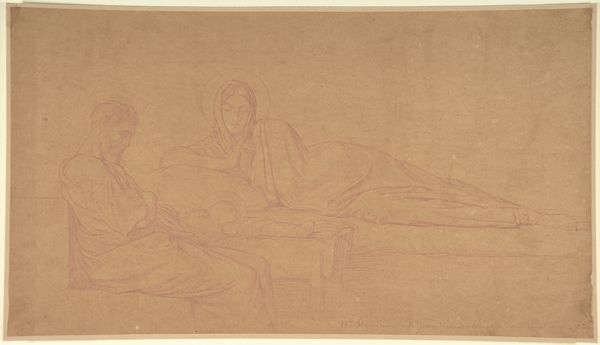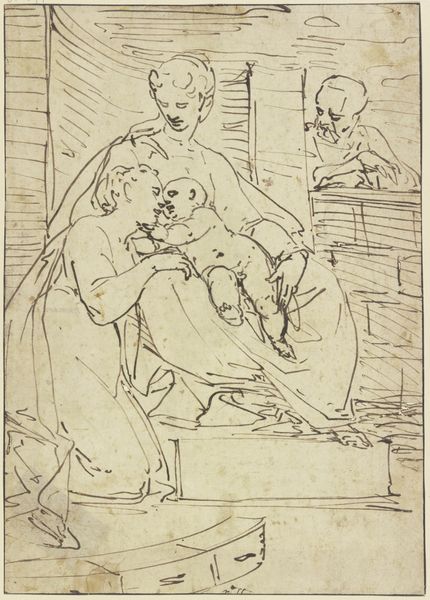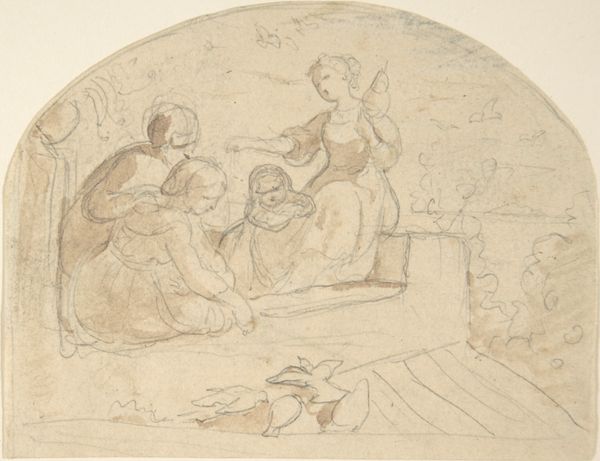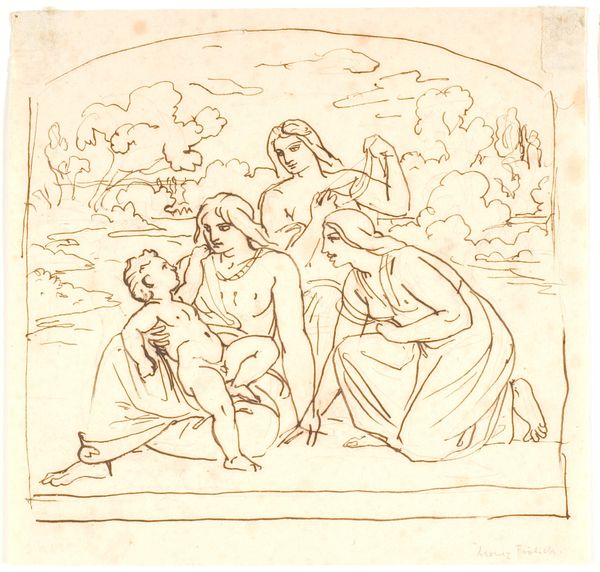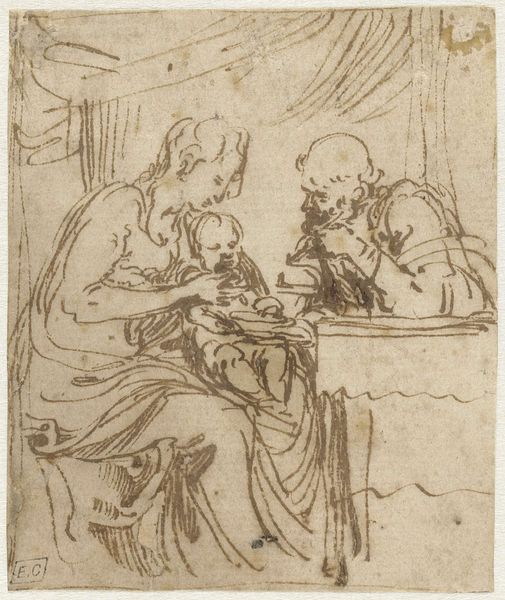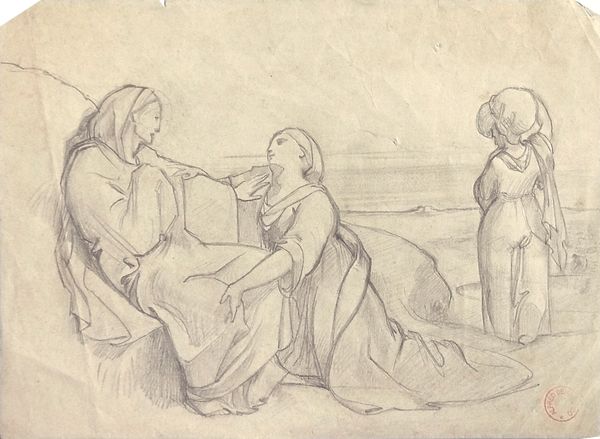
drawing
#
portrait
#
drawing
#
figuration
#
intimism
#
academic-art
#
realism
Copyright: Public Domain: Artvee
Pierre Puvis de Chavannes made this sketch of two women and a child with graphite on paper. De Chavannes was working during the second half of the 19th century, in a period where traditional academic art was being challenged by avant-garde movements like Impressionism. The artist's classicizing style can be interpreted as an attempt to connect with enduring values and universal themes, but also, to some, a way to evade the pressing social issues of his time. The grid overlaying the figures suggests that this drawing was a preliminary study for a larger composition, probably a mural. The figures of women and children often symbolize ideals of motherhood and domesticity in art, but also raise questions about the roles assigned to women. While seemingly traditional, the muted tones and simplified forms also hint at a modern sensibility, capturing a sense of timelessness. As you contemplate this sketch, think about how de Chavannes navigates the tension between tradition and modernity, and how these representations connect with our current understanding of identity, gender, and the politics of representation.
Comments
No comments
Be the first to comment and join the conversation on the ultimate creative platform.
